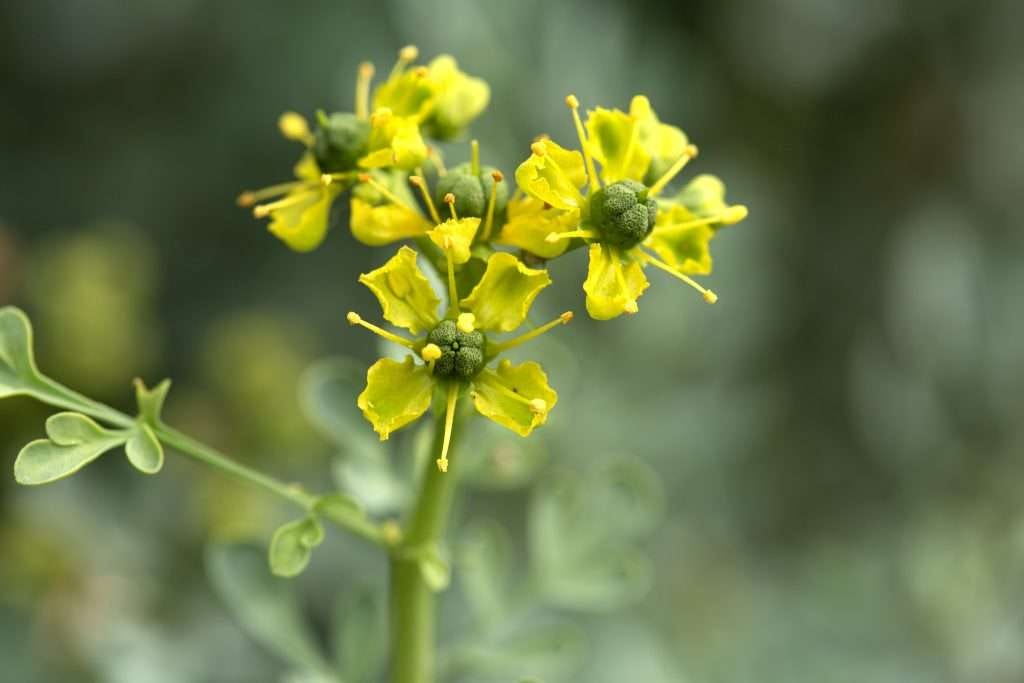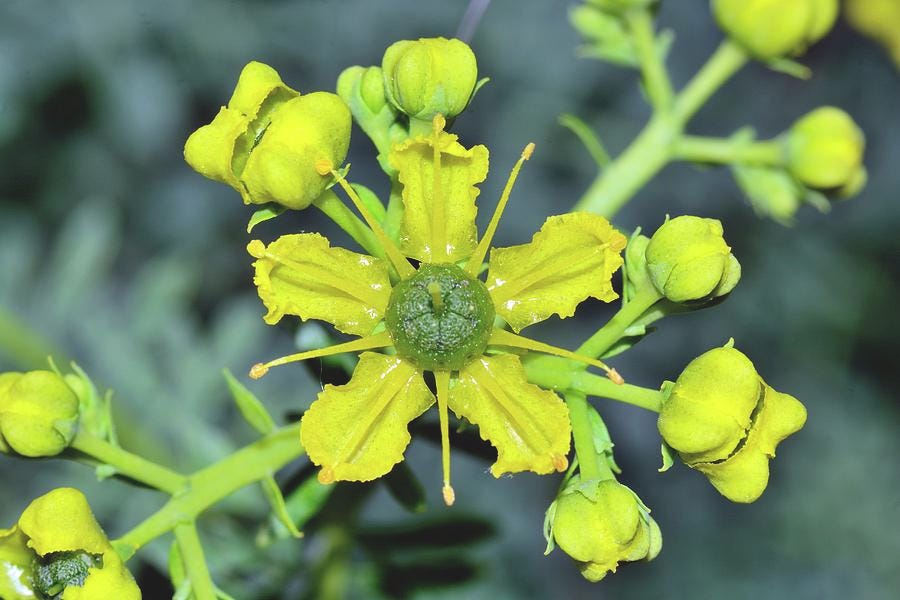Rue
There's rue for you, and here's some for me. We may call it herb of grace o' Sundays. O, you must wear your rue with a difference!
Well, I’ve done a bad job about talking about flowers again, so let’s get back at it and see how long it takes me to talk about them again!
Onward to Rue.
Rue (ruta graveolens) gets it’s name from the Greek word reuo which means “to set free” as the flower gained a reputation for freeing people from disease (Inkwright). While it was once used medicinally, it stopped being used because of it’s bitter taste and the fact tat if it was prepared incorrectly it became toxic. Most notably, rue was used in Four Thieves Vinegar which was said to give protection against the plague. In Ancient Greek and Rome, Rue was believe to improve eyesight by chewing it’s leaves. It is also an effective abortifacient and has been used to induce menstrual flow.
Also called Herb of Repentance and Herb of Grace, early Christian priests would dip bundles of rue in holy water in hopes of offering protection to people and their homes. It was also believed that planting rue by a doorway offered similar results in Gaelic traditions. In modern day, rue is most commonly seen in a deck of playing cards, as the clubs suit is modelled on the shape of the rue leaf.
In Floriography, rue was given the meaning of regret. But when it was sent it was not to express regret on the sender’s part, but as a warning: “You’ll regret what you’ve done” (Roux).
In Hamlet, Ophelia typically gives rue to Gertrude and to herself. When looking at the meaning of the word itself it could be symbolic of Ophelia regretting her relationship with Hamlet or inferring to Gertrude that the Queen regrets her relationship with Claudius. Looking at the Victorian meaning through the Language of Flowers Ophelia giving rue to Gertrude could be seen as a threat as the Gertrude and Claudius has started to see Ophelia as a threat due to the truth in the nonsense she speaks. But the mention of rue could also indicate that Ophelia is pregnant, especially with it being a flower that can induce abortion, as some productions of Hamlet do imply she is pregnant during the mad scene.
Sources:
“Floriography - the Language of Flowers.” Flowers by Flourish, 27 Jan. 2015, www.flowersbyflourish.com/floriography/.
Inkwright, Fez. Folk Magic and Healing: An Unusual History of Everyday Plants. LIMINAL 11, 2019.
“Ophelias Flowers - Htsdc.Org.” Htsdc.Org, htsdc.org/wp-content/uploads/Ophelias-Flowers.pdf. Accessed 8 May 2023.
Roux, Jessica. Floriography: An Illustrated Guide to the Victorian Language of Flowers. Andrews McMeel Publishing, 2020.
“Rue – a Misunderstood Herb.” The Lincoln Druid, 31 Dec. 2021, lincolndruid.wordpress.com/celtic-medieavel-herb-garden/rue/.
“Ruta Graveolens.” Wikipedia, Wikimedia Foundation, 23 Jan. 2025, en.wikipedia.org/wiki/Ruta_graveolens.
Shakespeare, William, and Eli Reynolds. Hamlet - the Pelican Shakespeare. Penguin Putnam Inc, 2016.
“The Magical Uses of the Rue Plant: Protection, Luck, Money.” Original Botanica, originalbotanica.com/blog/magical-uses-fresh-rue-plant-herb?srsltid=AfmBOoqFAss9dXgUhGepdzqq-YtuB3P6H70oQoI8PLjjG5kShIfHcyJV. Accessed 13 Feb. 2025.
Whetstone, Stephanie. “The Language of Flowers.” Princeton University, The Trustees of Princeton University, pwrites.princeton.edu/tools-and-insights/the-language-of-flowers/. Accessed 30 June 2024.





